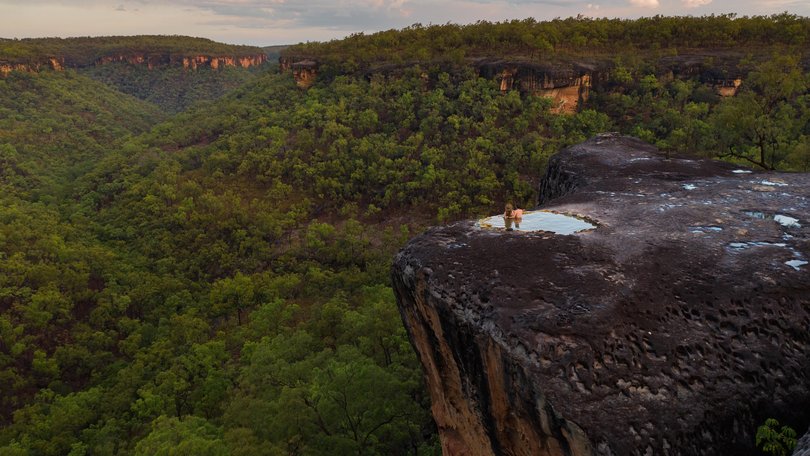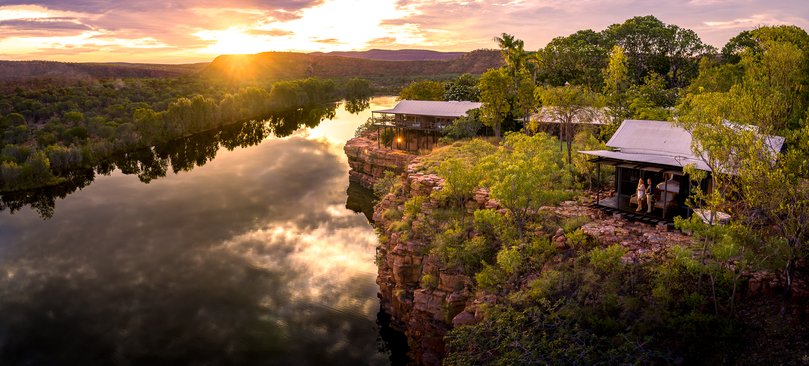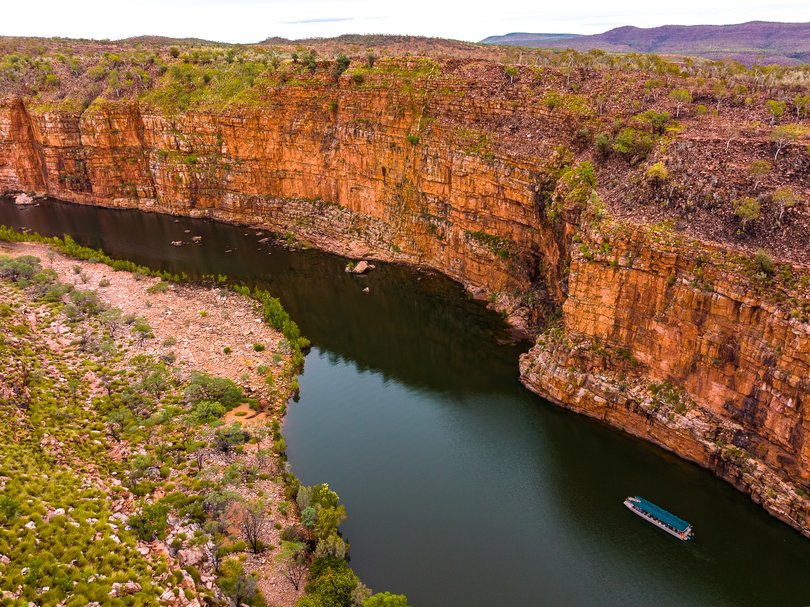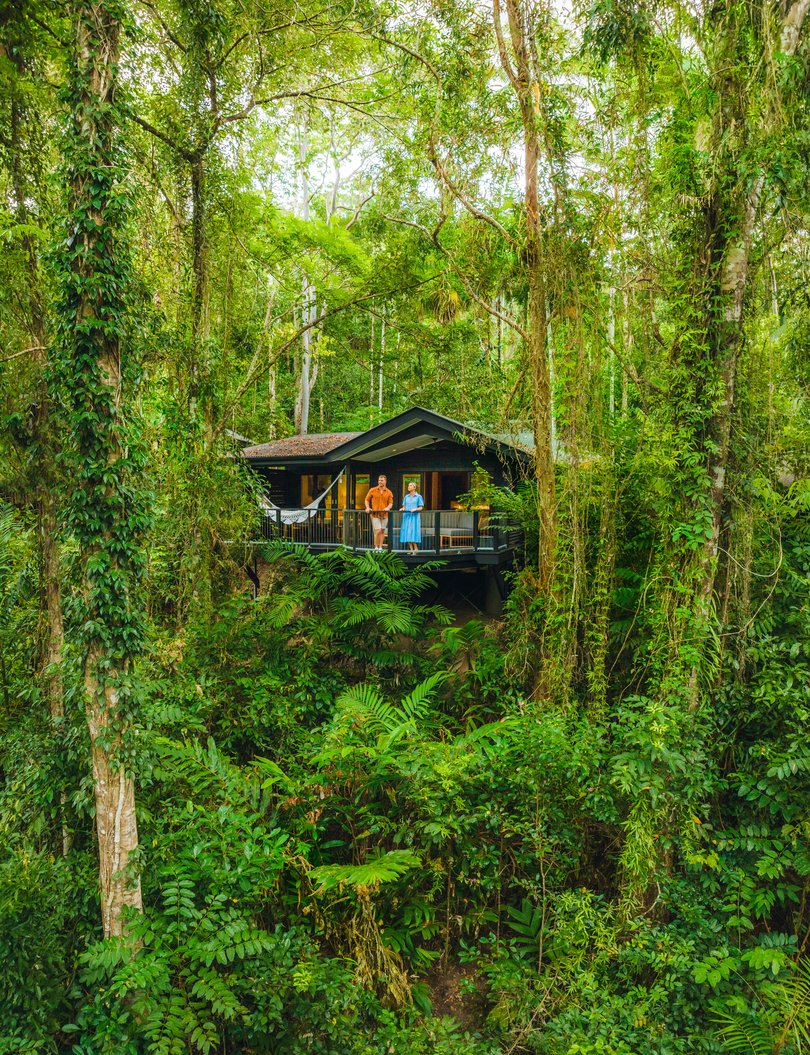Indigenous tourism in Australia: Why First Nations experiences are redefining travel

Tourism has always mirrored desire.
For much of the last century, that’s meant spectacle, diversion or indulgence. Today, however, it’s increasingly about depth.
Around the world, travellers are seeking experiences that move beyond monuments and moments and into the living traditions that give destinations their meaning.
Sign up to The Nightly's newsletters.
Get the first look at the digital newspaper, curated daily stories and breaking headlines delivered to your inbox.
By continuing you agree to our Terms and Privacy Policy.The trend is measurable — by 2034, Indigenous tourism is forecast to generate $US67 billion ($101b) annually, according to a 2024 report by the World Travel & Tourism Council. In Australia, the appetite is sharper still. In 2023–24, three million trips incorporated First Nations activities, the highest number on record.
Behind the statistic lies a reordering of the industry. Here, where custodianship stretches back more than 65,000 years, Indigenous-led tourism is emerging as one of the country’s most dynamic, transformative and exciting sectors.
From ornament to authority
For decades, Aboriginal and Torres Strait Islander knowledge was presented to visitors in fragments — a performance at a hotel conference, a painting on a terminal wall. Traditions appeared as ornament rather than foundation. That model is being dismantled.
“We’re moving away from tokenistic gestures or surface-level storytelling, and into an era where Indigenous voices, cultures and communities are at the heart of tourism experiences,” says Nicole Mitchell, executive officer of Discover Aboriginal Experiences, which unites more than 50 Indigenous-owned-or-operated businesses across the country and is backed by Tourism Australia
Today, a visitor might join a guided walk where ecological restoration is explained through Creation stories, paddle through mangroves with a traditional owner, or sit beneath a night sky interpreted as both astronomy and ancestry.
“This isn’t heritage locked in the past — it’s culture that breathes, grows and responds to the world around it,” Mitchell says.
For Phil Lockyer, Tourism Australia’s head of Indigenous affairs, the sector’s allure is forged via deeply layered and unique points of connection.
“Our First Nations stories are rich and diverse and provide a unique opportunity to see our country through the lens of the world’s oldest living cultures,” Lockyer tells ROAM.
Each venture is Indigenous-led, ensuring that interpretation remains with the custodians themselves, and that economic returns flow directly back into community enterprises.
Redefining luxury and innovation
The shift is perhaps most striking in sectors once thought resistant to change. Luxury travel, for decades associated with seclusion and comfort, has begun to trade in cultural depth as the highest form of exclusivity.
At El Questro in WA’s Kimberley, a 2022 Indigenous Land Use Agreement returned 165,000ha to the Wilinggin people after more than a century of pastoral tenure. The stand-out luxury property continues to operate as a tourism enterprise under a 99-year leaseback, but El Questro Homestead guests are now invited into experiences led by traditional owners, such as Injiid Marlabu Calls Us — an immersion that links story, country and visitor in profound ways.
In the Daintree / Kaba Kada of Queensland — the world’s oldest living rainforest — Silky Oaks Lodge works with Walkabout Cultural Adventures to introduce travellers to Kuku Yalanji perspectives of reef and forest before bedding down in style among ancient, sky-scraping trees along Mossman Gorge.
And from a horizon-stretching, luxury tented base at Longitude 131° near Uluru, Anangu guides lead visitors along songlines that web across the desert.

Voyages Indigenous Tourism Australia, which manages neighbouring Ayers Rock Resort, has made cultural programming central to the property, particularly in 2025: the 40th anniversary of the hand-back of Uluru–Kata Tjuta National Park to its traditional owners. That 1985 transfer of title, and the subsequent leaseback for joint management, remains one of the country’s most important precedents for the way tourism is conducted on sacred land.
Food has become another frontier. Bundjalung chef Mindy Woods has gained international recognition for her championing of native produce, acknowledged by the World’s 50 Best organisation this year. Through her brand Karkalla, now based on a Byron Bay farm, Woods runs cooking classes, pop-up dinners and workshops that invite guests to engage directly with native ingredients, while also learning how plants are harvested, prepared and linked to country.
“Operators are drawing on ancient knowledge to inform everything from sustainable land management to contemporary design, food, art and performance,” Mitchell offers.
In this way, Karkalla has become less a restaurant, more a platform — part classroom, part cultural exchange — where eating is an act of understanding as much as enjoyment.
Building communities
Indigenous tourism is not just about individual encounters — it’s also restructuring the economies and social fabric of the communities it comes from.
Sand Dune Adventures in Port Stephens, NSW, is operated by the Worimi Local Aboriginal Land Council, with profits directed into housing, health, environmental restoration and education.
On the NSW north coast, Wajaana Yaam Gumbaynggirr Adventure Tours offers paddleboarding journeys where guides teach language and history on country. Using the profits, Wajaana’s founder Clark Webb established Australia’s only Indigenous-language school — creating a pipeline where tourism, education and cultural renewal reinforce one another.
Meanwhile, in Broome/Rubibi, Mabu Buru Tours channels revenue from its coastal foraging experiences into the Mabu Buru Foundation, funding mental health programs and cultural events.

These enterprises are part of a broader pattern — tourism as a tool for self-determination. For some, that means reinvesting in land and language. For others, it’s about a chance to create new avenues of leadership.
On North Stradbroke Island/Minjerribah, Yura Tours was founded by Quandamooka woman Elisha Kissick, who has made it her mission to centre women’s voices in cultural tourism. Her daughters often join tours and aspire to continue in her footsteps — a continuity Kissick views as central, ensuring that leadership passes from one generation of Indigenous women to the next.
Kissick informs part of a wider cohort of female trailblazers. In Western Australia, Dale Tilbrook has become a leading advocate for native foods, while Rosanna Angus of Oolin Cultural Tours, a Bardi Jawi woman from the Dampier Peninsula, shares saltwater traditions with travellers on cruises to Sunday Island, once home to an Aboriginal Mission.
In Sydney/Warrane, Aunty Margret Campbell has long been a force in cultural education through Dreamtime Southern X, while in Tasmania/Lutruwita, Carleeta Thomas carries her family’s heritage forward as a guide on the wukalina Walk.
“There’s a sense of energy and possibility right now,” Mitchell says.
“We’re seeing more diversity in operators — from family-run tours to women-only experiences and large cultural centres. Crucially, all of these are being shaped and led by Indigenous people themselves — and increasingly strong, inspirational Indigenous women. That’s what makes them powerful.”
Land and legacy
The cumulative effect is structural. Indigenous tourism now creates employment and businesses in regions where few other opportunities exist. It allows younger generations to remain on country, maintaining language and ancestral ties.
It also fortifies identity while sustaining fragile environments.
“Indigenous tourism isn’t just telling stories — it’s creating jobs, building businesses, strengthening pride and identity, and generating opportunities for young people to stay on country and share their culture,” Mitchell says.
“At the same time, it’s helping to protect fragile environments, because our operators see no separation between culture and nature — caring for one means caring for the other.”

Land agreements underscore this broader shift in national consciousness.
In Western Australia, parts of Murujuga/Burrup Peninsula — home to one of the world’s largest and oldest galleries of petroglyphs — have been transferred to traditional owners, elevating Indigenous authority in a landscape long dominated by heavy industry and, this year, garnering the region a UNESCO listing.
It follows in the footsteps of Victoria’s Budj Bim Cultural Landscape, which, in 2019, became the first site in Australia to be inscribed on the World Heritage List solely for its Aboriginal significance. Here, Gunditjmara people engineered one of the world’s oldest known aquaculture systems, using volcanic stone channels to trap and harvest eels. Today, Gunditjmara guides lead visitors across the wetlands, explaining how their ancestors created a sustainable food economy thousands of years before European settlement.
A future of reciprocity
International parallels exist. In Canada, First Nations-owned lodges are setting new standards for wilderness tourism. Māori enterprises in New Zealand/Aotearoa are central to the national “brand”. In Scandinavia, Sámi tourism integrates traditional knowledge of reindeer and Arctic landscapes into mainstream itineraries.
Yet Australia is distinguished by the scale and continuity of its custodianship. Sixty-five millennia of unbroken heritage offer travellers a depth of engagement rare elsewhere. The question now is how far the broader industry is prepared to adapt?
Indigenous tourism unsettles many of its inherited assumptions. It doesn’t present knowledge as a commodity for easy consumption. It asks visitors to participate rather than spectate, to listen as much as to look. It introduces a definition of luxury that privileges depth over seclusion, and a definition of sustainability measured in millennia rather than marketing cycles.

This is why Indigenous tourism matters beyond economics. Growth is important, but more radical is the way it reframes expectations for both travellers and operators.
“The future of tourism in Australia is one where Indigenous culture is not a side note, but a defining feature,” Mitchell says.
Tourism, long an industry of extraction, is being recast as one of reciprocity. The shift is not yet complete, but the direction is clear — a future in which the stories of country are told by those who have safeguarded them, and where to visit is not just to see, but to reckon with what it means to belong.
